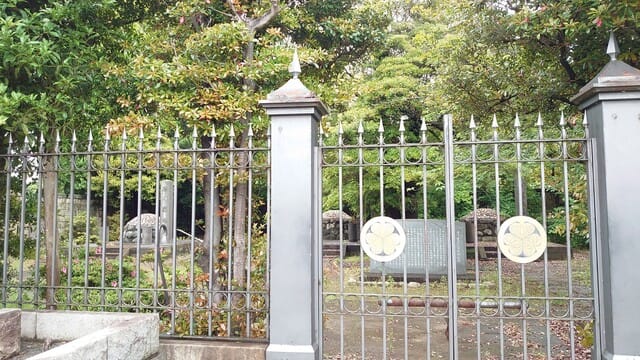徳川家康の墓/日光東照宮と徳川慶喜の墓/谷中霊園
A Grave of Tokugawa Ieyasu in Nikko, Tochigi Pref. and a Grave of Tokugawa Yoshinobu in Yanaka, Tokyo
 日光東照宮
日光東照宮
Tosho-gu Shrine in Nikko, Tochigi-pref.
2022年5月、偶然にも、初代徳川将軍の家康の墓を日光東照宮で、最後の将軍の慶喜の墓を東京の谷中霊園で見てしまいました
最近になって、江戸時代の平和な時代はとても貴重だったと思うようになっていたので、なんだか感激しました
約250年、ほぼ大きな戦争がなかった江戸時代の日本。これって、世界的に見て凄いことでは?
I happened to visit a graves of Ieyasu, the first Tokugawa Shogun, in Nikko and Yoshinobu, the last Shogun.
I recently came to think that the relatively peaceful times of Edo Period were so precious. In Japan, there were almost no major wars in the Edo period for about 250 years. Isn't that surprising from a global perspective?
↓石鳥居 Ishidori (Stone shrine gate at front approach)
写真手前の「東照宮」の文字を揮毫したのは、渋沢栄一です。
大正13年に建立されましたが、栄一は、大正4年の東照宮300年祭で奉斎会会長を務めました。
栄一は、明治に入り、徳川幕府の庇護を失った日光の社寺を護るべく、日光鉄道(現JR日光線)の敷設、日光駅の築造、日光ホテルの整備なども支援したとのことです。
It was Eichi Shibusawa who wrote the words "Toshogu" in the picture.
Although it was built in 1924, Eichi served as president of Hosaikai at the Toshogu 300 Years Festival in 1915.
During the Meiji period, in order to protect the shrines and temples in Nikko, which had lost the patronage of the Tokugawa shogunate, he supported the construction of the Nikko Railway (now the JR Nikko Line), the Nikko Station and the development of the Nikko Kanaya Hotel.

石鳥居は軍師官兵衛の子、黒田長政の1618年に奉納。国の重要文化財。
高さ9.2m、柱間6.7m、柱の直径3.6m。
柱の上部の意思は重量を軽くするために中心がくりぬいてあり、耐震を考慮した造りになっているとのこと
The stone shrine gate was dedicated in 1618 by Nagamasa KURODA, the son of Kanbei, a strategist. National important cultural property.
It has a height of 9.2 m, a space between columns of 6.7 m and a column diameter of 3.6 m.
The design of the upper part of the column is hollowed out in the center to make it lighter and more earthquake-resistant.
↓神厩舎の三猿の浮彫
Relief Carving of famous Three Monkeys on Shinkyusha (Stable for sacred horses) built in 1636.

↓陽明門からの眺め
奥の左から、表門、神厩、内番所。左手前が上神庫。
↓ View from Yomeimon Gate
From the left in the back, Omotemon (First gate/1636), Shinkyu (Stable) and Uchibansho. Kamijinko (Storehouse) is on the left front.

↓改修が終わったばかりの陽明門 (1636年築)
Yomeimon gate (Second gate) that has just been renovated

↓陽明門の脇から社殿を囲む回廊の彫刻 (1636築)
Roofed cloisters enclosing shrine buildings
*cloister=クろイスター=(寺院などの)回廊、柱廊

↓陽明門の彫刻のアップ
Enlargement of the sculpture of Yomeimon

↓逆さ柱 inverted pillar


↓陽明門の天井画
Ceiling painting of Yomeimon Gate

↓本殿の入り口の唐門
Karamon gate (Third gate/1636) at the entrance of the main shrine

↓高名な左甚五郎によって彫られた眠り猫
A famous sleeping cat carved by skilled Hidari Jingoro

↓徳川家康の墓がある奥社へは、眠り猫の奥の坂下門をくぐって石段を上がって行きます。
To go to Okusha where Tokugawa Ieyasu's grave is, pass through Sakashita gate behind Sleeping Cat and go up the stone steps.


↑上から見ると、結構な石段です。
回廊から奥社に至るまでの石段は207とのこと。
The stone steps look so steep from above.
There are 207 stone steps from the cloister to Okusha Shrine.
↓奥宮拝殿 奥社唐門(銅製)
Okusha Haiden (Okumiya Worship hall/1636) and Okusha Karamon (Bronze gate in front of Hoto/1650)

↓家康の墓である、奥社宝塔
Okusha Hoto (Inner Shrine Pagoda enshrining the ramains of Tokugawa Ieyasu/1683)

谷中霊園
Yanaka-Reien Graveyard
↓徳川慶喜の墓 Grave of Tokugawa Yoshinobu



↓渋沢栄一の渋沢家から寄付された土地にある、谷中霊園中央東広場の案内図
上の赤丸が、公園内の渋沢栄一の墓のある場所。下の赤丸が徳川慶喜の墓のある場所。
栄一の墓石は、慶喜の方向をしっかり向いて建てられていました。あれだけの成功を収めた渋沢栄一が、死ぬまで徳川慶喜の恩を忘れなかったのかと思うと、感慨深いです
The Central East Square of the Yanaka Cemetery in the land donated by the Shibusawa family of Eichi Shibusawa
The upper red circle Akamaru is where Eichi Shibusawa's grave is. The red circle below is the grave of Tokugawa Yoshinobu.
Eiichi's tombstone was built facing Yoshinobu. I was deeply moved to think that Eichi, who achieved such success, did not forget an obligation to Yoshinobu until his death.

↓渋沢家の墓
左から2番目が、渋沢栄一の墓石です。
Grave of the Shibusawa Family
The second one from the left is the gravestone of Eichi Shibusawa.

↓中央東広場がある場所は、以前渋沢家の墓所敷地でしたが、一部が平成27年に返還され、霊園内広場として整備されています。
公園内の巨大なタブノキは、渋沢家の墓所から移植されたそうです。
The central east square used to be the graveyard of the Shibusawa family, but part of it was returned in 2015 and has been maintained as a square in the cemetery.
This huge Tabunoki tree ( Machilus thunbergii) was transplanted from the Shibusawa family's graveyard.

 江戸時代の観光? (Tourism in Edo Period) ↑Makki's English内の関連ページはこちら
江戸時代の観光? (Tourism in Edo Period) ↑Makki's English内の関連ページはこちら
 「日光の寺社」は、1999年に世界遺産登録されました。
「日光の寺社」は、1999年に世界遺産登録されました。
《登録内容》
日光東照宮
日光二荒山神社(別宮本宮神社、別宮滝尾神社を含む)
日光山輪王寺(大猷院霊廟を含む)
103棟(国宝9棟、重要文化財94棟)の「建造物群」と、これらの建造物群を取り巻く「遺跡(文)」
 Shrines and Temples of Nikko
Shrines and Temples of Nikko
were listed on the UNESCO World Heritage Site in 1999.
Two Shinto shrines (Futarasan Shrine and Tōshō-gū)
One Buddhist temple (Rinnō-ji)
Nine of the structures are designated National Treasures of Japan while the remaining 94 are Important Cultural Properties.
 英語学習支援サイト
英語学習支援サイト
Makki's Let's Speak English!




















※コメント投稿者のブログIDはブログ作成者のみに通知されます